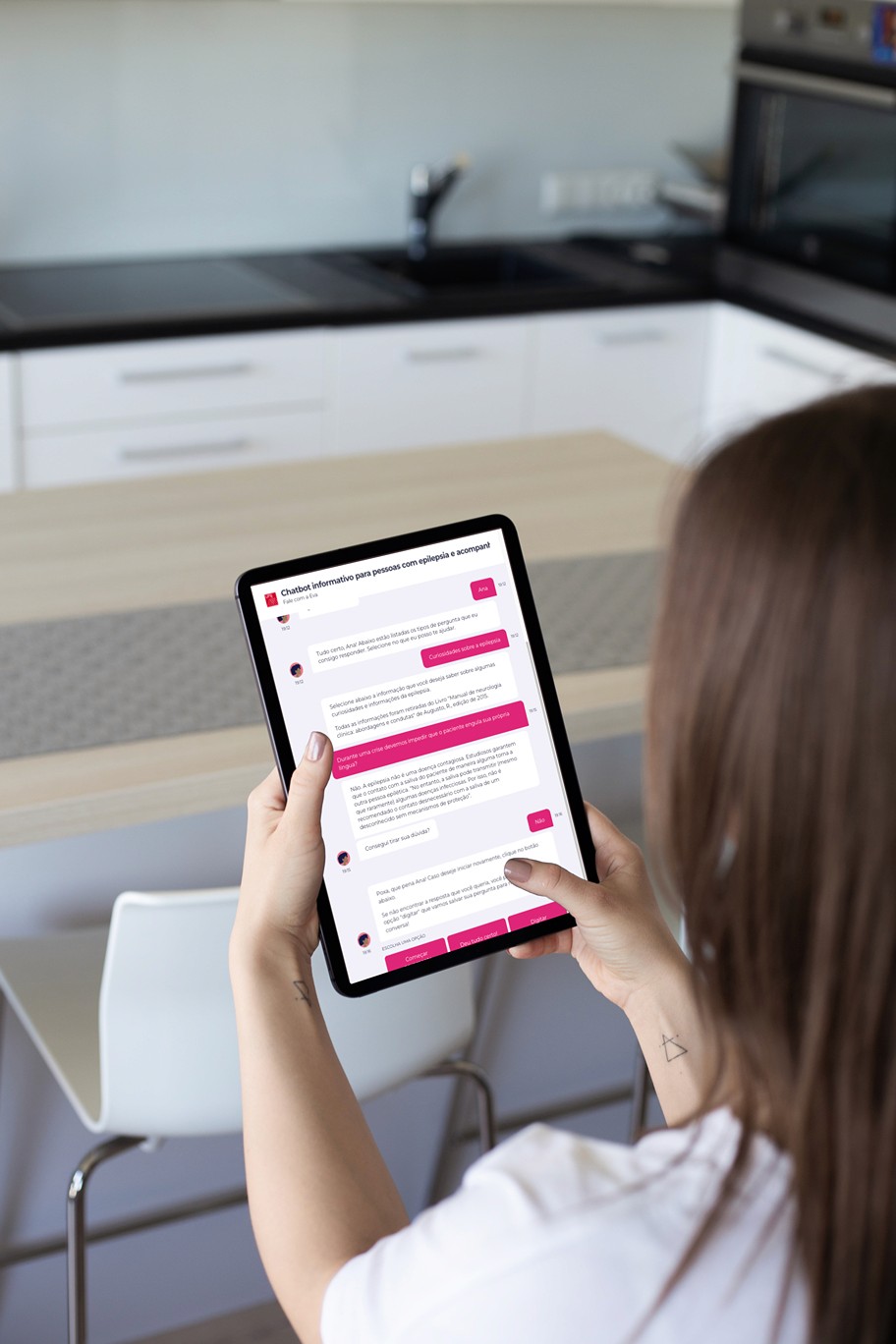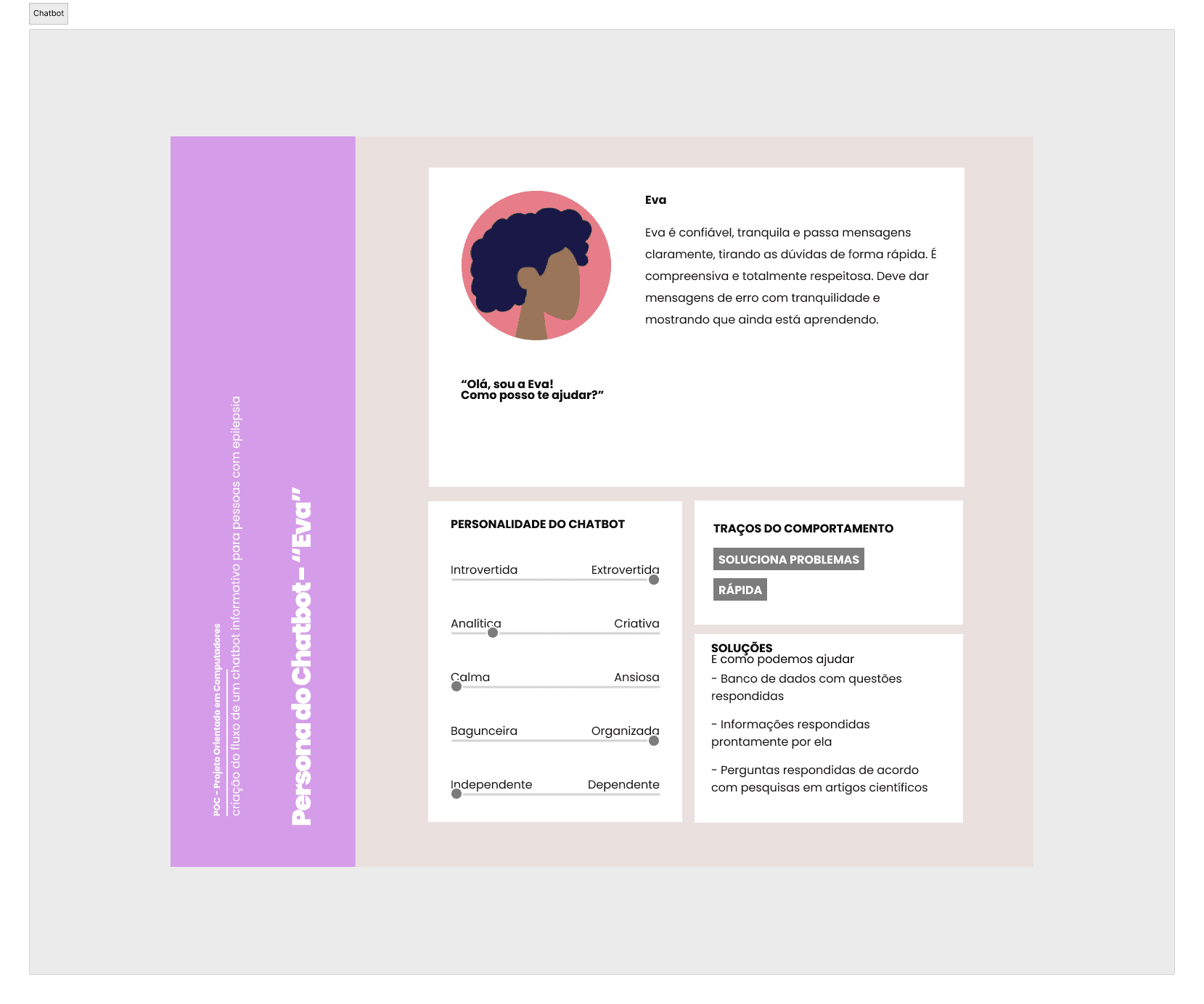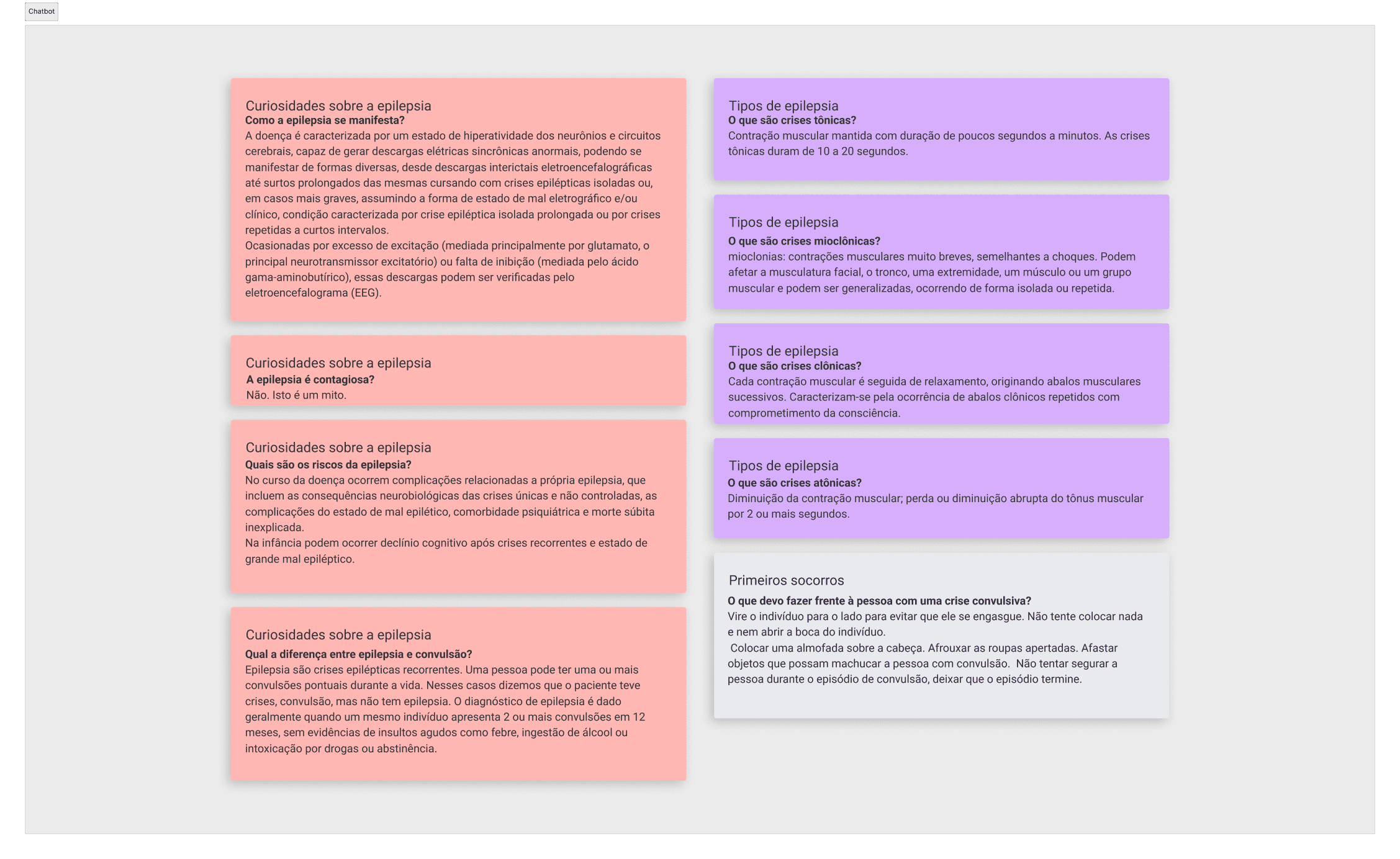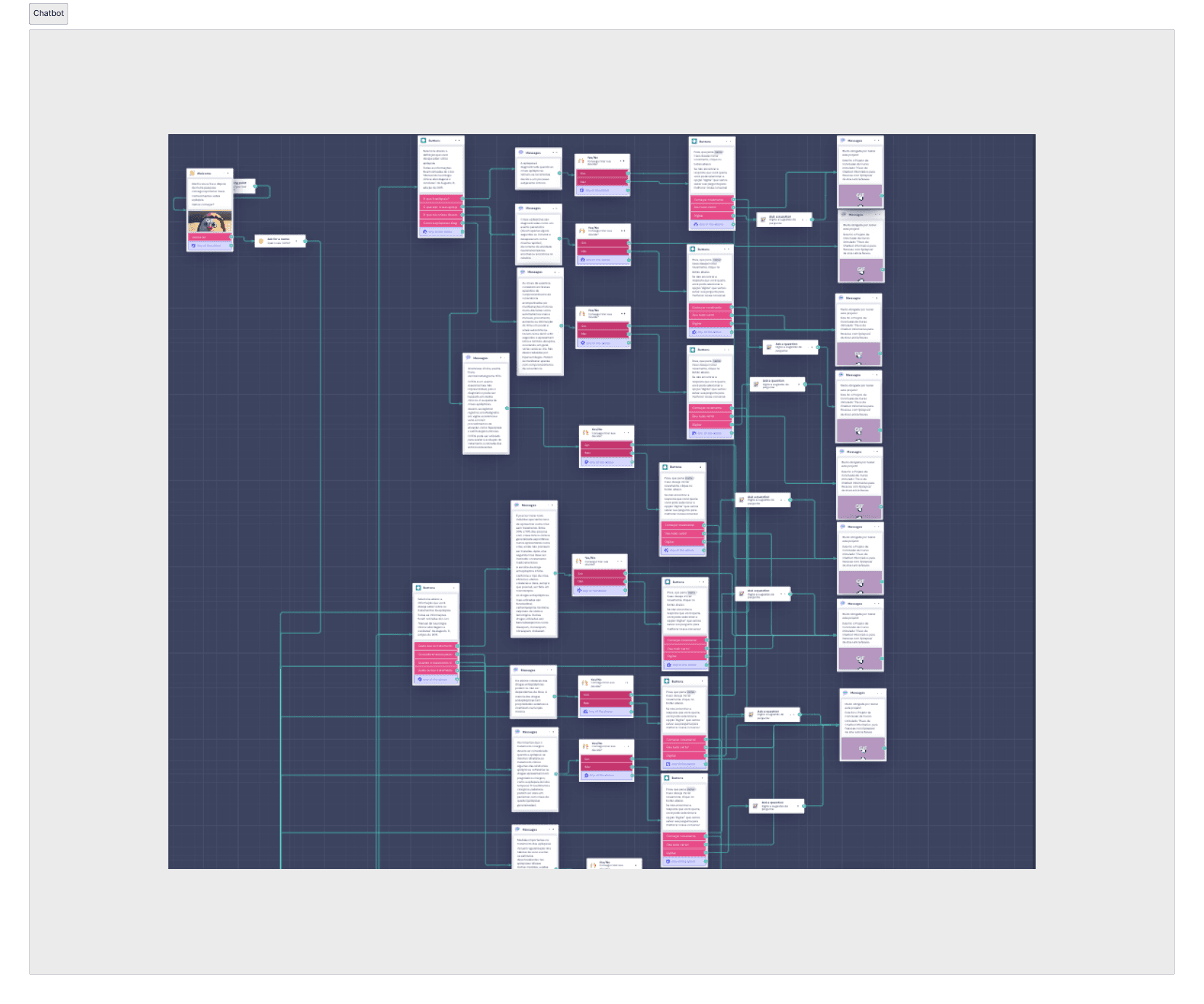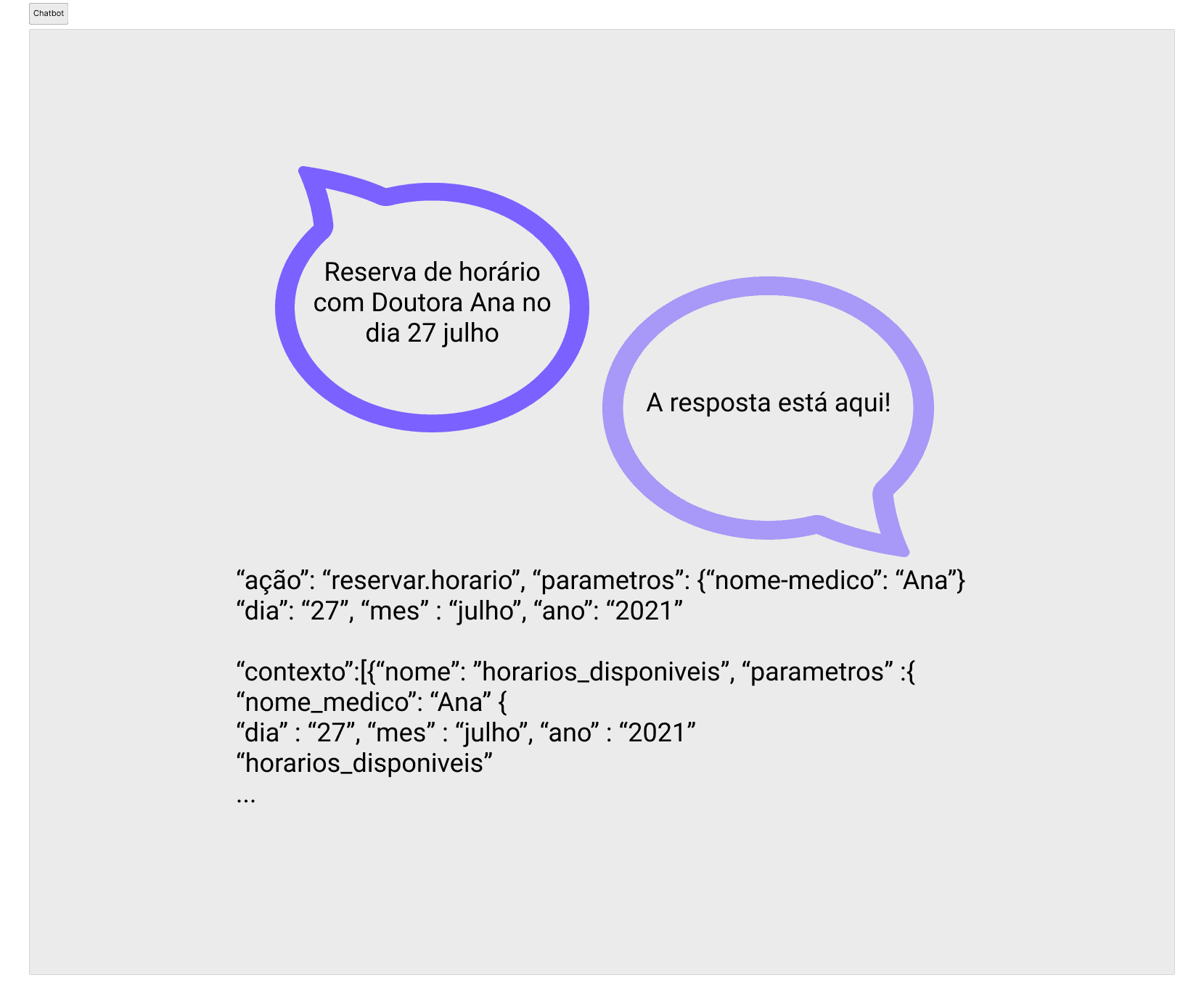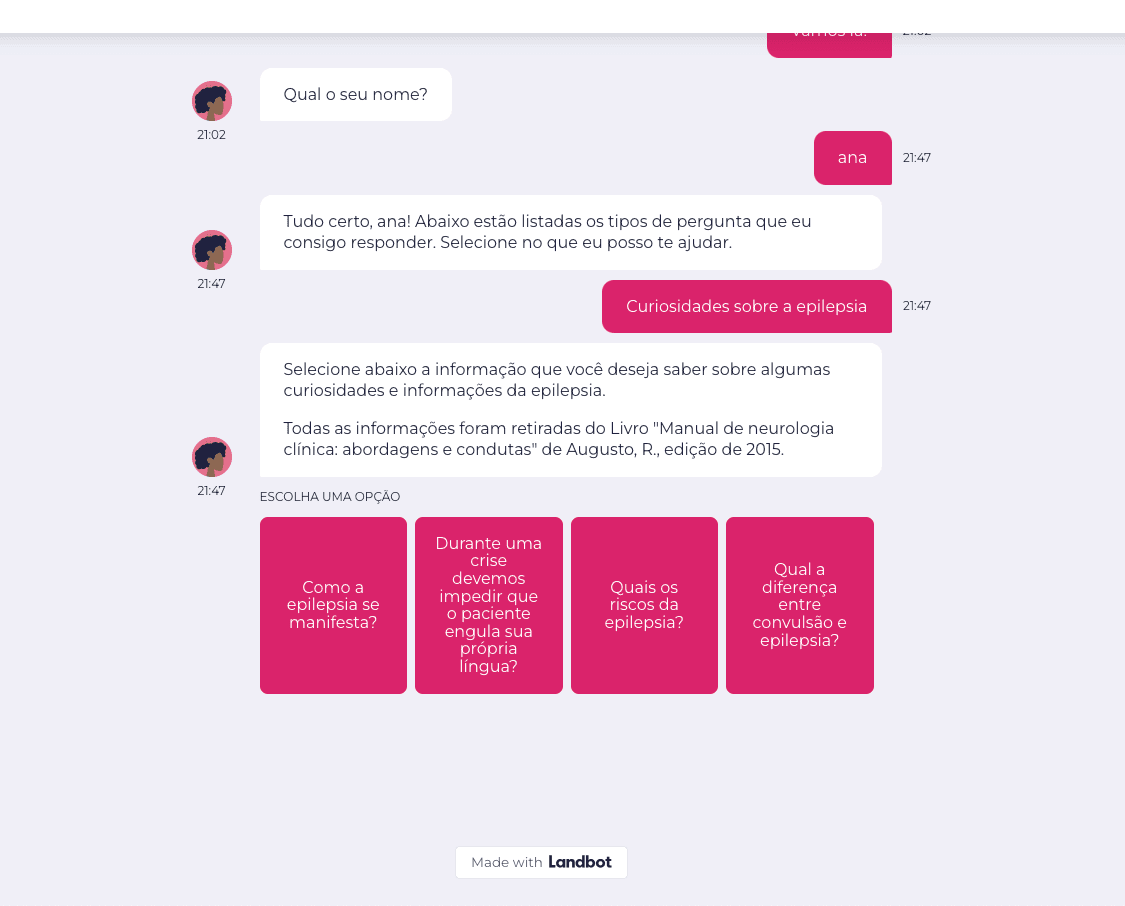Undergraduate project: Chatbot for people with epilepsy
Development of the "Eva" chatbot, a technological innovation for disseminating health information, with a focus on conversational fluidity and user experience.
Role
UX Writer | Chatbots
Industry
Computer Science, Health
Duration
1 year (2021)
Step 4. Implementation in Landbot
The flow was created on the Landbot platform, where I used variable logic to personalize communication with the user.
When we receive the user's name, we receive it as "@name", saving this variable for a future query or return in a message:
"Hi @name, how are you?" or, "Thanks for testing our chatbot @name...", for example.
Stage 5. Presentation and Final Documentation
I prepared a detailed presentation and documentation, highlighting the importance of interactive design for health education and how the project can positively impact the sector.
The documentation included the entire design journey, from research to the implementation of the chatbot.
